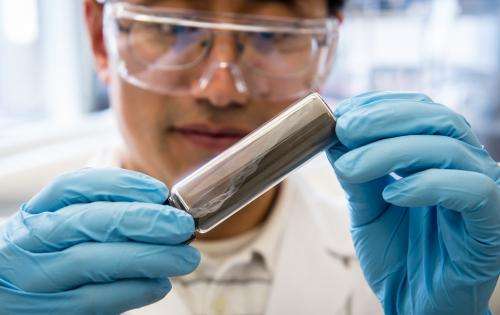Project could expand use of company's lithium technology

Researchers at the U.S. Department of Energy's Argonne National Laboratory working with FMC Corporation (NYSE:FMC), Charlotte, N.C., have developed novel materials that would help expand technology and product development by industries using the company's unique Stabilized Lithium Metal Powder (SLMP).
"Our fundamental research on the SLMP technology and development of new methods to apply the lithium metal product into high-energy Li-ion batteries for electric vehicles is an example of how national laboratories can aid U.S. companies to increase their competitive advantage in the global marketplace," said Argonne chemist John Zhang. "As a researcher, it's very satisfying to see the impact your innovations have on industry."
The researchers, led by Zhang, discovered how to overcome technical challenges that hindered use of SLMP in commercial applications by devising a way to incorporate a safe form of the lithium powder into any type of Li-ion battery, including those used for electric vehicles, enabling greater energy density, extended cycle-life and reduced manufacturing costs.
Non-stabilized lithium powder is unstable when exposed to air. FMC's SLMP is coated with a protective layer to stabilize the lithium. As a result, the stabilized lithium is safe to handle in the dry room environment.
SLMP is not compatible with conventional binder and solvent slurry materials. This led Zhang's team to develop a novel polymer binder and solvent system, which demonstrated excellent compatibility with SLMP, thus enabling SLMP for slurry processing.
The innovative new polymer binder/solvent system allows the SLMP to be evenly distributed in the electrode, enabling optimum use of each lithium particle in the SLMP material. Argonne researchers also developed new methods to activate the SLMP. Compression of the electrode laminates is typically employed to activate SLMP particles. The battery manufacturing cost can be greatly reduced due to the simplified SLMP activation method developed by Argonne.
FMC recently awarded Zhang and his colleagues – Khalil Amine, Shengwen Yuan, Zheng Xue and Jung-Je Woo – its prestigious Scientific Achievement Award for their significant research and development efforts.
Argonne has patents pending on the polymer binder and solvent technologies, as well as the activation method.
Provided by Argonne National Laboratory




















